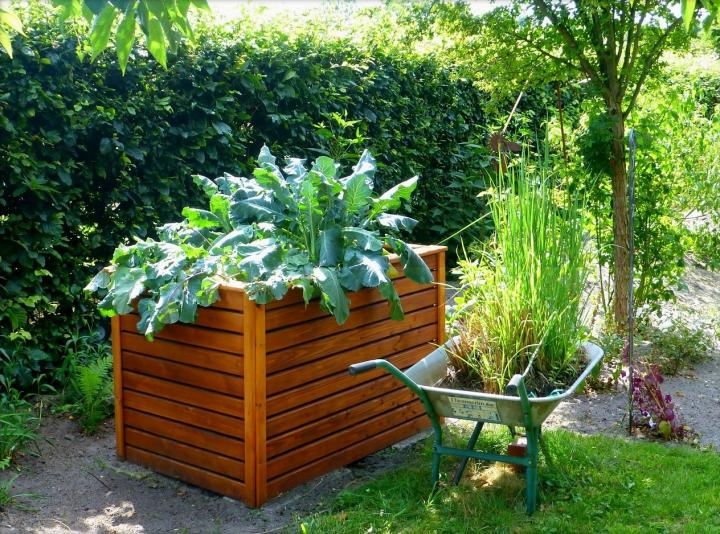





 Photo by Pixabay
Photo by Pixabay
Raised bed gardens, tiny plots, container gardening, and other techniques help you grow more in less space. Here are 5 tips to make your harvest bountiful—plus, a garden plot design.
Forget about growing plants in single file in long, parallel rows. You can grow up to 10 times the amount of produce in the same space with raised beds. In a raised garden box, you keep outside weeds from your garden soil, prevent water run off and soil compaction, and worry about less slugs and snails and other pests. Also, garden boxes you to concentrate your energy in a small area, meaning you can work, water, weed, and fertilize as economically as possible. You can make the most of the entire growing season by using season-extending devices such as cold frames, cloches, row covers, and plastic tunnels.
Succession planting keeps the garden in continual production. Whenever one crop is harvested, have seedlings ready to transplant in its place. For best results, use quick-maturing varieties to fit several crops into one season and spread out the harvest.
“Intercropping” means growing two or more crops together to save space. Plants should be placed close enough so that their leaves will touch, shading the ground between them when they are fully mature. This will keep weeds down and conserve moisture, eliminating the need to mulch and weed. As the plants begin to crowd out their neighbors, harvest the early-maturing ones, leaving room for the others to develop. For example, pair lettuce with longer-season vegetables such as broccoli, peppers, or tomatoes.
Some intercropping partners thrive if their roots occupy a different depth of soil. Pairing shallow-rooted vegetables, such as bush beans, with deeply rooted beets makes good use of space without creating root competition. Similarly, planting heavy feeders such as cabbage or cucumbers with light-feeding carrots or beans reduces the competition for soil nutrients.The best intercropping partners are companion plants that make different demands while complementing each other.
Lay out your garden plot with the fence, trellis, or wall at the north side. By planting the tallest plants there, you will avoid shading the smaller ones. Vining plants, if left to sprawl, take up valuable space in a small garden, so help them grow up.
Some heavier plants, such as cantaloupes, melons, and winter squashes, may need help in climbing, so tie their vines to the structure to get them going in the right direction. Support the fruit with slings to keep them from tearing off the vine too soon.
Good soil, adequate sunshine, and sufficient drainage are the only requirements for a successful vegetable garden. Every garden—and every gardener—is different. Create a garden tailored to your space and needs.
A 100-square-foot garden (10x10 feet) can easily yield a wide variety of veggies. Bisecting it with two narrow paths forms four beds that are easy to reach into and tend. (One square = one square foot.)

Copyright © www.100flowers.win Botanic Garden All Rights Reserved